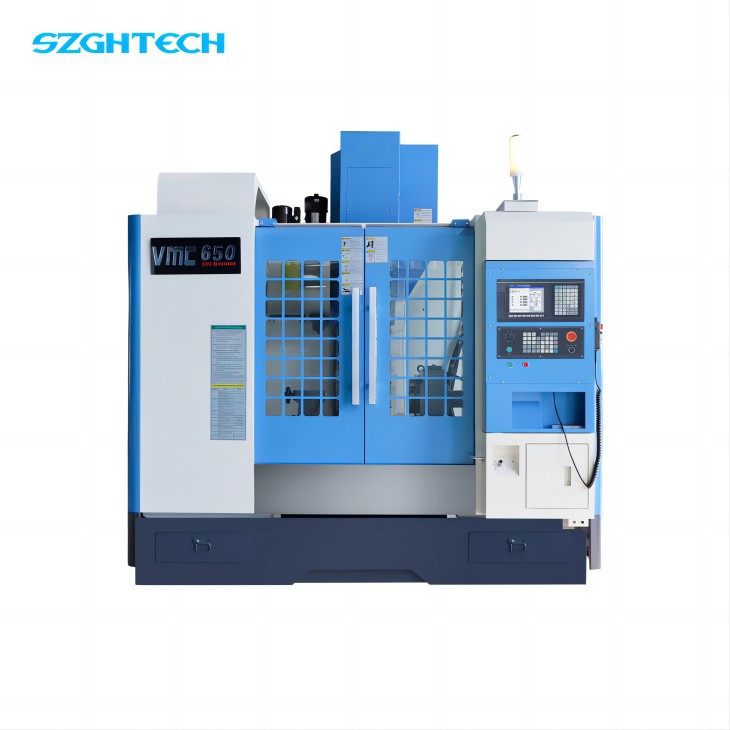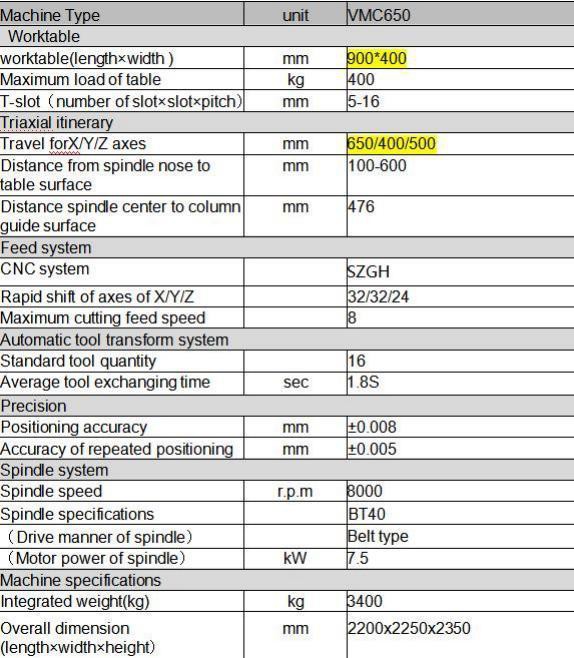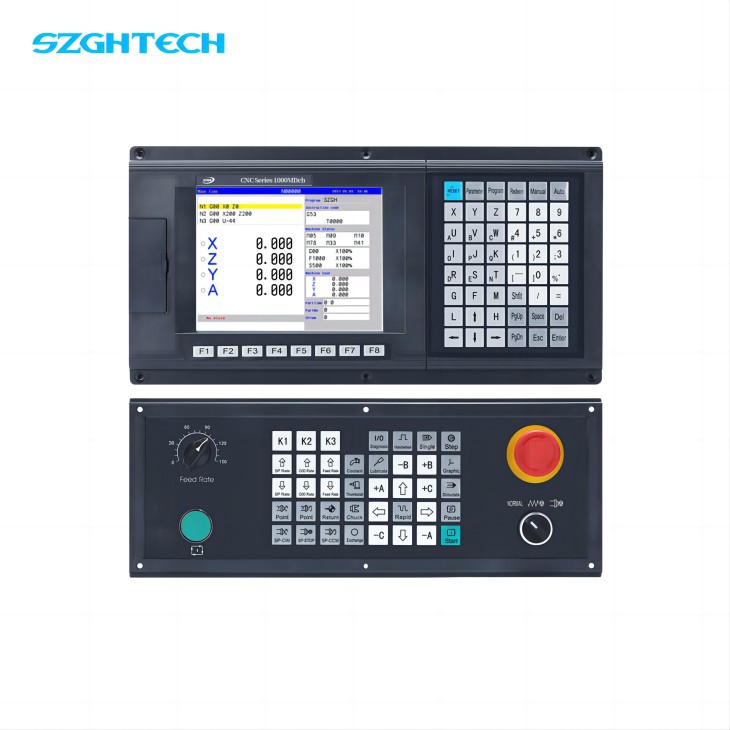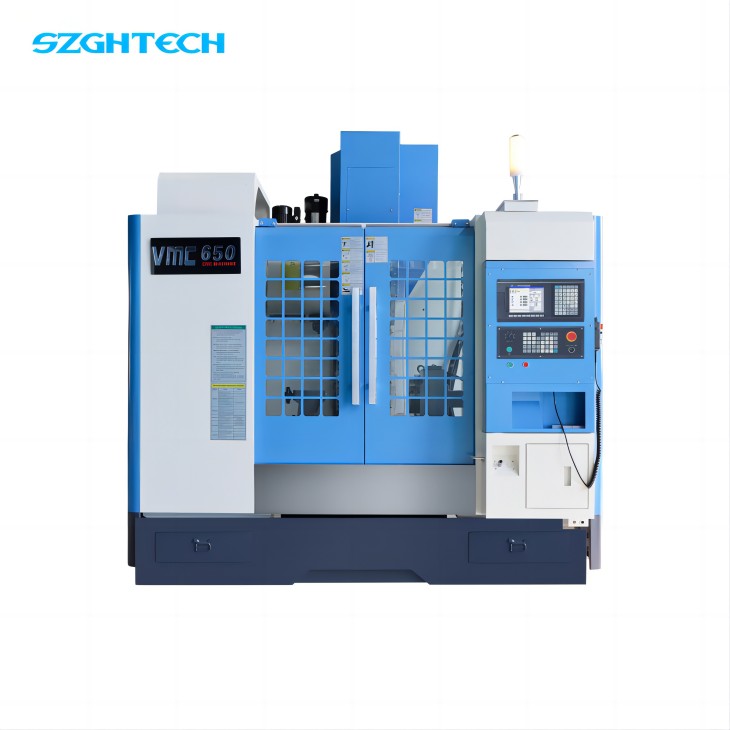CNC machine tools
A lathe is a machine tool that mainly uses turning tools to turn rotating workpieces. Lathes are the most important type of cutting machine tools among metal cutting machine tools. In general machine manufacturing factories, lathes are the most numerous and are also called work machines. Drills, reamers, reamers, taps, die and knurling tools can also be used on lathes for corresponding processing. The function of a lathe is to cut rotating surfaces of various sizes and shapes, as well as spiral surfaces.

component
Spindle box: Also known as the headstock, its main task is to pass the rotational motion from the main motor through a series of transmission mechanisms so that the spindle can obtain the required different speeds of forward and reverse directions. At the same time, the spindle box distributes part of the power. Transfer motion to the feed box. The spindle in the spindle box is a key part of the lathe. The stability of the spindle running on the bearing directly affects the processing quality of the workpiece. Once the rotation accuracy of the spindle is reduced, the use value of the machine tool will be reduced.
Feed box: Also known as the tool feed box, the feed box is equipped with a transmission mechanism for feed motion. By adjusting the transmission mechanism, the required feed amount or pitch can be obtained, and the motion is transmitted to the cutter through a feed rod or screw. stand for cutting.
Lead screw and light rod: used to connect the feed box and the sliding crate, and transmit the movement and power of the feed box to the sliding crate, so that the sliding crate can achieve longitudinal linear motion. The screw is specially designed for turning various threads. When turning other surfaces of the workpiece, only the feed rod is used instead of the screw. Students should distinguish the difference between the feed rod and the lead screw based on the contents of the sliding crate.
Slide box: It is the control box for the lathe's feed movement. It is equipped with a mechanism that converts the rotational motion of the feed rod and the lead screw into the linear motion of the tool holder. The longitudinal feed motion and transverse feed motion of the tool holder are realized through the feed rod transmission. And rapid movement, the screw drives the tool holder to move longitudinally in order to turn threads.
Tool holder: It consists of two layers of skateboards (medium and small skateboards), a bed saddle and a tool holder body. It is used to install the turning tool and drive the turning tool to move longitudinally, transversely or diagonally.
Tailstock: It is installed on the bed rail and moves longitudinally along this rail to adjust its working position. The tailstock is mainly used to install the rear center to support long workpieces. It can also be used to install drill bits, reamers, etc. for hole processing.
Lathe bed: It is a large basic component of a lathe with guide rails (mountain-shaped guide rails and flat guide rails) that require high precision. It is used to support and connect various components of the lathe, and ensure the accurate relative position of each component during work.
Cooling device: The cooling device mainly pressurizes the cutting fluid in the water tank and sprays it into the cutting area through the cooling water pump to reduce the cutting temperature, wash away chips, and lubricate the machined surface to improve the service life of the tool and the surface processing quality of the workpiece.

Main supplier of components
|
NO. |
Name |
Brand |
|
1 |
CNC system |
---------- |
|
2 |
Main motor |
---------- |
|
3 |
X/Y/ Z axis motor, driver |
---------- |
|
4 |
Ballscrew |
GZB/ FZC/ QIJIAN ( Taiwan) |
|
5 |
Ballscrew bearing |
SKF/ NSK/ CSPG( Japan) |
|
6 |
Linear guides |
Hiwin ( Taiwan) |
|
7 |
Spindle |
OKADA/ VOL IS/ AIMACH( Taiwan) |
|
8 |
Precision locknut |
YINSH/ SWIFT ( Taiwan) |
|
9 |
Heat exchanger |
WEN HENG/ XIN FU ( Joint- venture) |
|
10 |
Automatic lubricating system |
HERG/ DA MA IT IA N ( Japan/ Taiwan) |
|
11 |
Pneumatic system main components |
AirTAC/CHWANG ( Taiwan) |
|
12 |
Cooling pump |
Deyang/OURUISI ( Joint-venture) |
|
13 |
ATC- 16 |
OKADA/ AIMACH( Taiwan) |

Characteristics of CNC system:
(1) High-precision control: Through precise motion control and real-time feedback, the CNC system can achieve high-precision processing operations and improve the processing accuracy and consistency of products.
(2) Flexibility and programmability: The CNC system can write and adjust processing programs according to different processing requirements, realize switching of multiple processing methods and process routes, and adapt to the processing needs of different products.
(3) Automation and intelligence: CNC systems can realize automated processing, reduce manual intervention, and improve production efficiency. At the same time, it also has intelligent functions and can perform self-diagnosis and troubleshooting to improve the stability and reliability of the equipment.
(4) Data management and remote monitoring: The CNC system can manage and store processing data to facilitate the tracing and analysis of the production process. At the same time, it also supports remote monitoring and control, enabling remote operation and management, improving production flexibility and efficiency.






